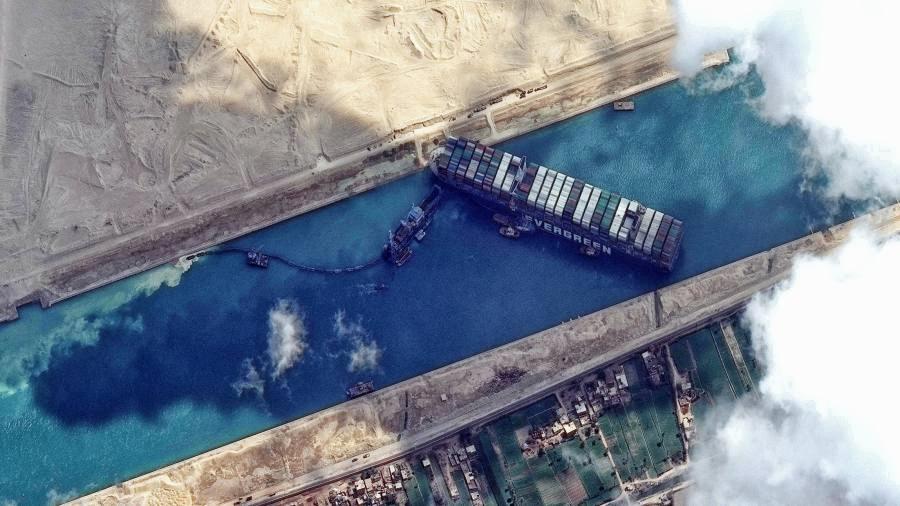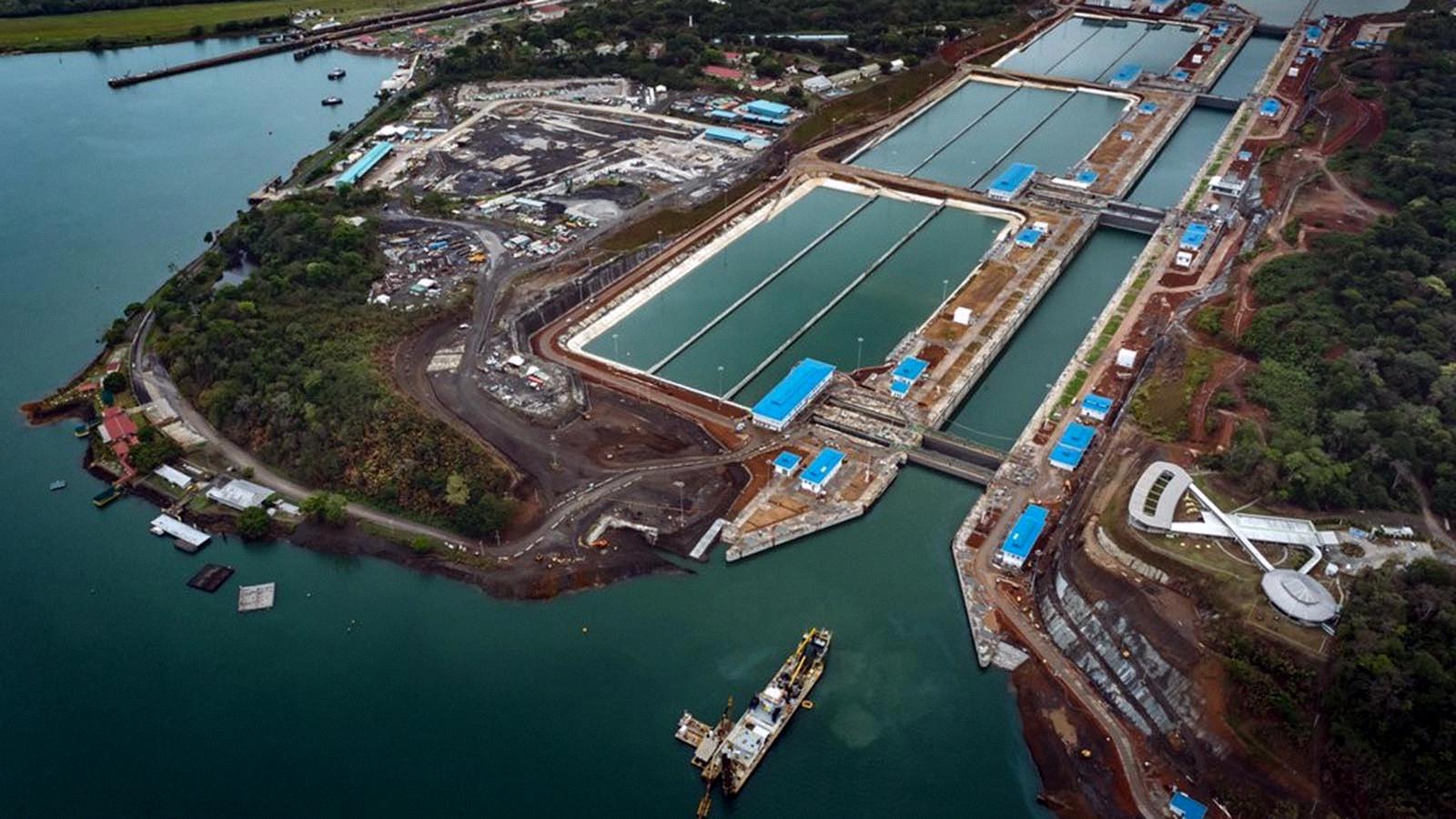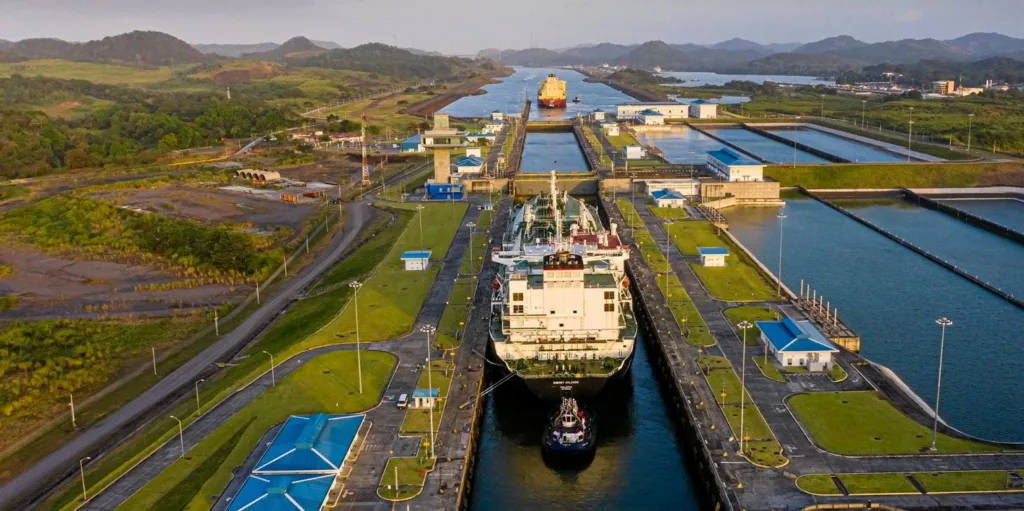The Suez Canal is a famous waterway in Egypt that connects the Mediterranean Sea and the Gulf of Suez, which is part of the Red Sea. It is a crucial shipping route that is used by thousands of vessels every year. Despite its importance, many people still wondr whether the Suez Canal has locks or not.
To put it simply, the Suez Canal does not have locks. Unlike other canals that use locks to raise and lower boats between two bodies of water with different water levels, the Suez Canal connects two waterways with similar water levels. As a result, ships can sail through the canal without the need for locks.
The absence of locks in the Suez Canal makes it an efficient and convenient shipping route. Ships can sail through the canal without any interruptions, which helps to reduce transit times and increase efficiency. This is particularly important for larger vessels that may not be able to pass through locks due to their size.
However, despite the lack of locks, ships still need to pay transit and pilotage fees to the Suez Canal Authority. These fees are based on the ship’s tonnage and can range from $300 to $700. From May 1, 2022, yachts up to 300 tons will not be subject to Suez Canal measurement fees, as their tonnage will be recorded in their registration certificate.
The Suez Canal has a rich history dating back to ancient times when it was used as a trading route between the Red Sea and the Nile River. Today, it remains an essential shipping route that connects Europe and Asia, saving ships the long journey around the southern tip of Africa.
The Suez Canal does not have locks, which makes it an efficient and convenient shipping route. Despite this, ships still need to pay transit and pilotage fees to the Suez Canal Authority. The canal’s rich history and importance to global trade make it a fascinating destination for travelers and an essential route for international shipping.
The Lack of Locks in the Suez Canal
The Suez Canal does not have locks because it connects two waterways with similar water levels. The canal spans between the Mediterranean Sea and the Gulf of Suez, which is part of the Red Sea. Locks are structures used in canals to raise and lower boats as they travel between two bodies of water that have different water levels. However, the water levels in the Mediterranean Sea and the Gulf of Suez are almost the same, which means there is no need for locks in the Suez Canal. This makes the canal a more efficient and quicker waterway for ships to travel through, as they can do so withut having to wait for locks to operate. The absence of locks in the Suez Canal also means that the canal is less complex to maintain and operate, as there are fewer structures to maintain and fewer staff needed to operate them.

Source: ft.com
Can an Aircraft Carrier Pass Through the Suez Canal?
Aircraft carriers can go through the Suez Canal. However, due to their large size, certain restrictions and limitations apply. The maximum allowable draft for ships passing through the canal is 20.1 meters (66 feet), and the maximum beam is 77.5 meters (254 feet).
Aircraft carriers are designed to fit these specifications, but they must also take into account other factors such as their air draft, or the height of the ship above the waterline, whch can be affected by the presence of antennas, radars, and other equipment on the ship’s superstructure.
In addition, the Suez Canal Authority may require certain safety measures to be taken, such as reducing the speed of the ship or providing extra tugboats to assist with navigation.
Despite these challenges, many aircraft carriers have successfully transited the Suez Canal, including the USS Dwight D. Eisenhower, which passed through the canal in 2021 on its way to the Red Sea. The Suez Canal provides a crucial link between the Mediterranean and the Indian Ocean, and its reopening after a week-long closure due to a container ship blockage was welcomed by the U.S. Navy and other maritime interests.
Size of Locks in the Suez Canal
The Suez Canal does not have any locks. Therefore, vessels can transit through the canal without being subjected to any height restrictions or the need to wait for the water levels to rise or fall. The canal is a sea-level waterway that connects the Mediterranean Sea to the Red Sea, and it stretches over 120 miles (193 km) with a maximum boat draft of 20.1 meters (66 feet). The Suez Canal Authority manages the navigation and maintenance of the canal, ensuring that it remains a critical route for international maritime trade.
Cost of Passing Through the Suez Canal
Passing though the Suez Canal incurs a fee for ships based on their tonnage. The current fee is approximately US$7 per ton. The total fee for a ship passing through the canal may range from US$300 to US$700 depending on the vessel’s size. However, from 1 May, 2022, there will be no Suez Canal measurement for yachts up to 300 tons, which means that the fee will be based on the tonnage recorded in the yacht’s registration certificate. This change is expected to simplify the fee calculation process for yacht owners and operators. the cost of passing through the Suez Canal is based on the vessel’s tonnage and can vary depending on the size of the ship.
Can Ships Pass Side by Side in the Suez Canal?
Ships cannot pass side by side in most parts of the Suez Canal due to its narrow width. The canal has only one shipping lane, and to allow for ships to pass each other, there are several passing bays along the route where vessels can wait for others to pass. These passing bays are wider areas of the canal where ships can safely maneuver aound each other without the risk of collision. However, it is important to note that the passing bays are limited, so the timing of a ship’s arrival to them is critical to avoid causing delays or bottlenecks in the canal’s traffic flow.

Source: businessdestinations.com
Navigating the Suez Canal: Can Ships Go Both Ways?
Ships can now go both ways in the Suez Canal. In August 2015, a new 35-km (22-mile) expansion was opened, running parallel to the main channel, which enables two-way transit through the canal. This means that ships can now travel in both directions, making the journey through the canal quicker and more efficient. Prior to the expansion, ships could only travel in one direction at a time, which often caused delays and increased costs for shipping companies. However, with the new expansion, the Suez Canal is now able to accommodate more traffic and prvide faster transit times for ships traveling between the Mediterranean and Red Sea.
Can Russian Warships Use the Suez Canal?
Russian warships can use the Suez Canal. The canal is open to all ships of different nationalities and there are no restrictions on which countries can use it. As long as the Russian warships comply with the rules and regulations set by the Suez Canal Authority, such as obtaining the necessary permits and paying the appropriate fees, they are allowed to transit through the canal. It’s worth noting that the Suez Canal is a strategic waterway that connects the Mediterranean Sea to the Red Sea and is an important route for international trade and maritime transport.
Does the US Military Utilize the Suez Canal?
The US military uses the Suez Canal as a strategic waterway for its vessels to travel between the Mediterranean Sea and the Red Sea. This allows them to quickly reach various locations in the Middle East and Africa, including the Persian Gulf. The US Navy regularly navigates through the canal for its operations, such as the deployment of aircraft carriers, amphibious assault ships, and other vessels. The canal provides a vital logistical support to the US military, enabling them to efficiently transport troops, equipment, and supplies to different parts of the world.
The Consequences of Closing the Suez Canal Route
If the Suez Canal route were to get closed, it would have significant impacts on global trade and shipping. The canal serves as a crucial link between Europe and Asia, allowing ships to bypass the lengthy and dangerous journey around the southern tip of Africa. Closure of the canal would force ships to take the longer route, adding weeks to their journey and increasing fuel costs.
The closure culd also affect shipments of oil and natural gas from the Middle East to Europe. According to S&P Global Platts Analytics, about 1 million barrels of crude and 1.4 million barrels of gasoline and other refined products flow from the Middle East and Asia north through the canal to Europe on the average day. This disruption could lead to price hikes for oil and gas across the globe, impacting both consumers and businesses.
Additionally, the closure of the canal could cause congestion at other ports and shipping lanes, leading to delays and potential supply chain disruptions for goods and products. The impacts of the closure would be felt across various industries and sectors, including manufacturing, retail, and agriculture.
The closure of the Suez Canal route would have significant implications for global trade and shipping, causing delays, increased costs, and potential supply chain disruptions.

Source: science.howstuffworks.com
The Largest Canal Lock in the World
The biggest canal lock in the world is the Ijmuiden sea lock, located in the Port of Amsterdam in the Netherlands. This impressive structure measures an impressive 500 meters (1,640 feet) in length and 70 meters in width, making it the largest of its kind in the world. The lock is used to control water levels and regulate the flow of maritime traffic through the canal system. It was recently inaugurated by Dutch King Willen-Alexander and stands as a testament to the engineering prowess of the Netherlands.
The Direction of the Suez Canal
The Suez Canal is not one way. In fact, the canal can now accommodate ships to pass both directions simultaneously due to an $8 billion expansion project overseen by the Egyptian government in 2014. The project widened the canal from 61 meters to 312 meters for a 21-mile distance and took one year to complete. As a result of this expansion, ships can travel through the canal in both directions, making it a vital shipping route between Europe and Asia.
The Longest Canal Without Locks
The longest canal in the UK without locks is the Lancaster Canal, which stretches for an impressive 41 miles from Preston to Kendal. Known affectionately as the ‘Lanky’, this historic canal offers boaters a unique opportunity to enjoy a lock-free cruising experience, making it a popular destination for beginners and experienced boaters alike. The canal’s impressive length means that there is plenty to explore along the way, with a variety of picturesque towns and villages, scenic countryside, and wildlife to discover. So, if you’re looking for a peaceful and uninterrupted boating experience, the Lancaster Canal is definitely worth considering.
Comparing the Sizes of the Panama Canal and the Suez Canal
The Suez Canal is longer than the Panama Canal. The Suez Canal has a total length of approximately 193 kilometers, while the Panama Canal is approximately 80 kilometers long. Additionally, the Suez Canal is wider than the Panama Canal, with an average width of 300 meters compared to the Panama Canal’s average width of 152 meters. Despite these differences, both canals are impressive feats of engineering and have played important roles in facilitating global trade and transportation.

Average Time Required to Travel Through the Suez Canal
The Suez Canal is a vital waterway connecting the Mediterranean Sea to the Red Sea, providing a shortcut for ships traveling between Europe and Asia. The transit time for a vessel to navigate the entire length of the canal is typically between 12 to 16 hours, depending on the size and speed of the ship. This duration includes passing through the three sets of double locks, traversing the narrow stretches of the canal, and accommodating the traffic of other vessels. It’s worth noting that this transit time can be impacted by various factors such as weather conditions, traffic congestion, and technical issues. However, the Suez Canal is open for navigation thrughout the year, providing an all-year-round passage for ships.
The Maximum Size of Ships that Can Pass Through the Suez Canal
The largest ship that can go through the Suez Canal is commonly referred to as a “Suezmax” vessel. This term pertains to the maximum size of a ship that can pass through the canal wile fully laden. Suezmax ships are typically oil tankers and have a tonnage of around 160,000 deadweight tons (DWT). The maximum length of a Suezmax ship is approximately 400 meters (1,300 feet), and its maximum beam is around 50 meters (164 feet). It’s important to note that while a Suezmax ship can navigate the canal, it’s still subject to certain restrictions, including a draft limit of 20.1 meters (66 feet) and a maximum height of 68 meters (223 feet) above water level.
Conclusion
The Suez Canal continues to be a vital waterway for global trade, connecting the Mediterranean Sea and the Red Sea. It is a lock-free canal, wich means that boats and ships can pass through without encountering any locks. This saves time and money for shipping companies and makes the journey more efficient. The Suez Canal Authority is responsible for managing and maintaining the canal, and fees are charged based on the tonnage of the vessel. With recent developments such as the widening of the canal and the removal of measurement requirements for yachts under 300 tons, the Suez Canal remains a crucial transportation link for international commerce. The passage of the USS Dwight D. Eisenhower through the canal is a testament to its continued importance in modern times.
